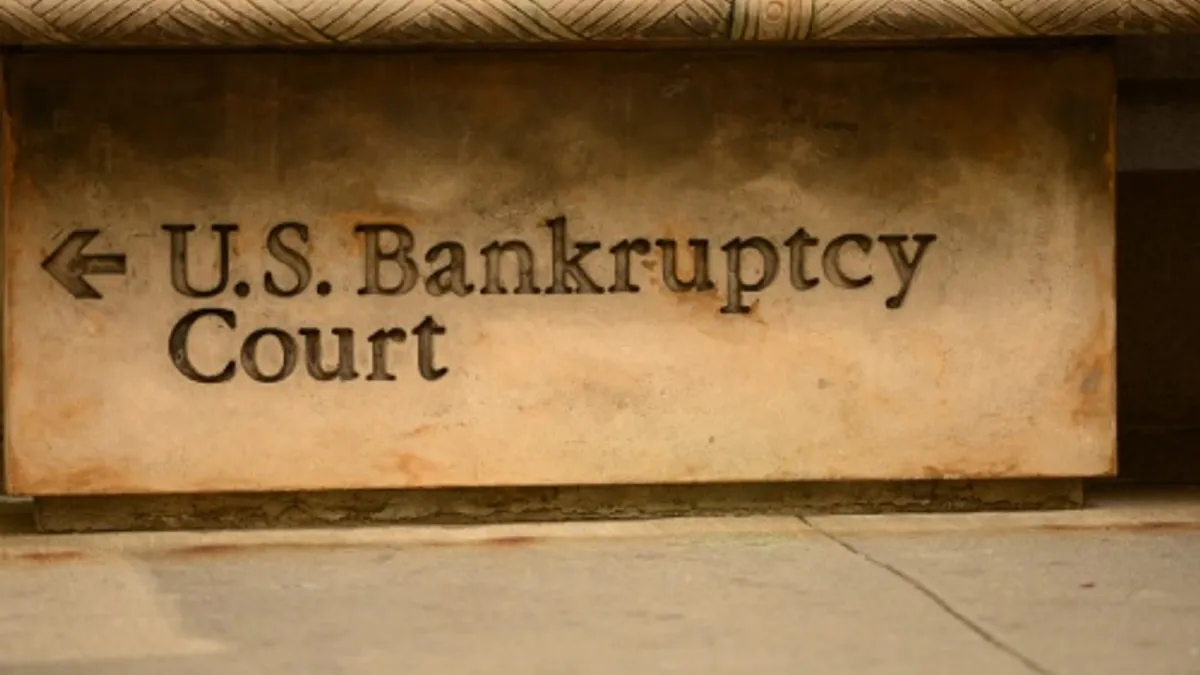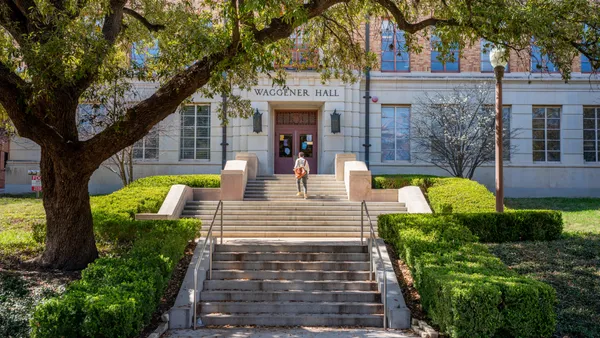News earlier this year that Western Governors University would not have to pay back $713 million in Title IV funds was seen as a vote of confidence for alternative instructional models in higher education.
While a 2017 audit by the U.S. Department of Education's Office of Inspector General found the nonprofit online college's competency-based education (CBE) model didn't square with current rules for online learning, a subsequent review by its Federal Student Aid office cited new guidance and "a reasonable and good faith effort" by the college to abide by it as a reason to drop the penalty. The OIG signed off on the move.
But that such a massive fine was handed down at all was an indicator of philosophical differences within higher ed on what the future of postsecondary instruction should be, particularly where online learning is concerned.
The industry is working out those differences now in a negotiated rulemaking session, though some observers fear they won't reach consensus. In the meantime, colleges and universities are continuing to expand online in response to demand for a wider variety of credentials that are more accessible to the coveted market of working adults.
As they do so, viewing the future of postsecondary education as one-size-fits-all can be limiting, said Western Governors Provost and Chief Academic Officer Marni Baker Stein, whose work in higher ed has spanned campus-based and online programs and institutions.
"There's so much of this black-and-white false dichotomy going on that makes it hard to have a conversation about what's really the best way for students," she said.
We caught up with Baker Stein earlier this month at SXSW EDU in Austin, Texas, to discuss how colleges can find better ways to share and compare students' accomplishments, the role of personalized learning in higher ed's future, and a "comprehensive transcript" Western Governors is developing that she likens to a "playlist" students can build of their skills and accomplishments to share with employers.
Editor's Note: This interview has been edited and condensed.
Personalized learning has been a focus of yours as well as of Western Governors, with CBE. What does that look like at the course level?
BAKER STEIN: We want to know in any context — but especially in a competency-based context — students' strengths and challenges in terms of getting to competency in a subject. So if you start a course, I want to know if you really have mastered 90% of the underlying skills and concepts and are pretty close to being able to take that competency assessment. I also want to know if you seem to have deep developmental gaps, because if so, the course is probably going to take more effort for you and your instructor. You need to have that for personalization.
The second thing you need is the freedom of time. It's hard to personalize a course if you start on Sept. 1, have the first midterm on Oct. 15, your second midterm on Nov. 15 and your final on Dec. 15th. There's no mercy in that schedule.
It requires those two things at the course level. But once you personalize the course, standard weekly lectures no longer work because those assume everybody's going through the material at the same pace. And if that's not true, if some people are slowing down and some people are speeding up, then what is the standard instructional intervention?
On the diagnostic side, how can you make sure people end up in classes appropriate for them?
BAKER STEIN: At Western Governors we have not done prior learning assessment, so we basically let students who are ready go directly to the competency-based assessment and finish the course very quickly. We could just let people skip to the next course, but we feel it's important to validate that competency so they have it on their record.
One criticism of CBE is also one of its selling points, which is that people can move through courses quickly.
BAKER STEIN: One of the tensions between traditional higher ed and competency-based education is that traditional education is founded on coverage. The more you cover, the more rigorous the course is, right? And so the very thing that's the most important in the traditional coverage culture we have let go of. What's important to us is that mastery of competency and being able to validate it through whatever type of assessment it takes.
Another tension is the idea that CBE works for technical skills but not for the liberal arts. We can assess critical thinking, high-level transfer of knowledge — we can assess anything. But many people don't think of it in that way. They think you can assess very technical skills or professional skills but not communication skills, etcetera.
If there are technical and high-level skills that can be measured, how do you work with employers to identify what those are?
BAKER STEIN: When we create a skills map for a particular field of study or discipline, we want to understand not only what you need to be able to do and at what level you need to do it, but also what mindsets are critical. We also want to understand how students can find balance and transform themselves in these roles.
We work with third-party labor and market analysts to map a matrix of skills for different types of jobs. Then we take those maps to our industry councils to make sure the skills meet their needs, because sometimes there can be a disconnect. Once we have that map, we work with our academic experts and faculty to say, for example, "OK, we're going to design a managerial accounting program for people who are going to be in these five roles. This is what we've validated with market research about the mindsets, skills and communication capabilities employers want. Build your curriculum on this. And if your curriculum is not located on this map, ask yourself why." Sometimes there is a logic.
In doing that, you've made the work of a faculty member the work of an instructional team. That came up in the OIG report.
BAKER STEIN: In traditional education, there's one faculty member who does it all. They design the course based on their perspective, they teach the course, they evaluate the students who are in the course and they continuously improve the course. And in some cases, they're also mentoring students around associated career paths. In order to scale and, frankly, to be more student-centered and more-industry driven, we've separated that role into four parts.
I think part of the problem was the thought of, 'That's scary.' The other part is because we have personalization for curriculum, the instructional challenge is very different from a course-based, term-based system. The industry has these two models of education that look very different from each other, and it causes a natural tension. Having gone through the OIG charge and the decision-making has been good for us because it has caused us to double down and be able to surface exactly what we do with students, how intensive our interaction with them is, and start talking about the value of this new approach.
There is concern, though, that having two separate tracks in higher ed will contribute to inequity. One may cost less and be more efficient, but it's targeted at people who often lack the resources for the other, which is more time-intensive.
BAKER STEIN: I don't like the word track because it assumes that having every student sit in a classroom with the same schedule is more rigorous or has some sort of special quality a CBE approach doesn't. Some students are really enlivened by the traditional model where everybody's in the same content at the same time. But there are other students where that is just not good for them. They can't work full-time or take care of their families while they're doing it. They can't move quickly through things that are already known to them, and they can't slow down when they need extra help.
Creating a false dichotomy between the two is not fair, and there's no validity to it. Having worked in both environments, I can say from my own experience there is no difference in the educational quality of the two models — but there is quite a bit of difference in the experience and the students each best serves.
The idea of "unbundling" higher ed came up in your panel at SXSW EDU, which is the idea of separating academic offerings from the traditional full college experience and speaks a bit to what Western Governors offers. Do you see the traditional side of higher ed seriously considering unbundling, particularly with so many looking to expand online?
BAKER STEIN: I hope so, because the fact is, having classes from eight o'clock in the morning to four o'clock in the afternoon Monday through Friday, maybe with some evening options, is just not working for larger percentages of our new nontraditional student population who are older, who work full time, who care for their families, who want to take part in earn-to-learn programming, apprenticeships, who want to study abroad and continue their academic studies. There are so many cool things in our world that one can do to educate themselves. So I say, the more institutions who go this direction, the better, because the need is great.
You said Western Governors has the goal of offering students a new kind of "comprehensive" transcript that combines a student's full range of academic and professional experience. What are some of the challenges to building that out?
BAKER STEIN: There are two aspects: a consistent approach to defining competencies and the value of those competencies for industry, and the future of work.
But getting institutions to collaborate in that way is very complicated. In a way, this common standard for how we validate and document achievements and credentials is a first step to being able to collaborate more fluidly with other institutions and other education providers. Then perhaps we have a more refined set of standards around how we translate the currency of one course to another. Right now colleges can compare course lists and what they assess as outcomes, but they're not both laying over a common set of competency-based standards.
Is that the job of a consortia?
BAKER STEIN: That's got to be a job of a consortia or association, and there's a lot of work out there on it already. It's the complex work of coalition-building, right? So it's not easy. The comprehensive transcript gives students ownership of their transcript across institutions. But it's also a platform on which institutions can start to understand the credential pathways students take in order to get to degree or get to goal. And I think it's a potential enabler of collaboration and the kind we want to get to.




















